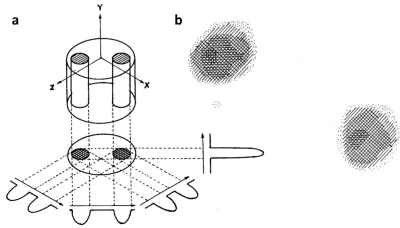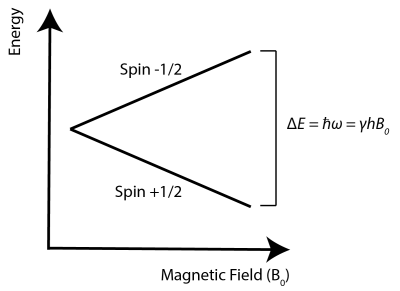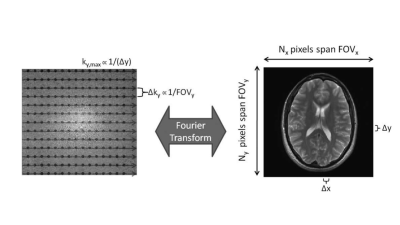Weekend Course
MR Physics I: From Spins to Signal
ISMRM & ISMRT Annual Meeting & Exhibition • 03-08 June 2023 • Toronto, ON, Canada

| 08:00 |
 |
The History & Evolution of Modern MRI
Paul Bottomley
Keywords: Physics & Engineering: Physics, Physics & Engineering: Pulse design, Physics & Engineering: Hardware While the origins of MRI date from the origins of NMR in 1948, nothing much happened until Lauterbur’s 1973 paper in Nature. Even so, this was more of an idea than a reduced-to-practice methodology. It took another decade to work-out spatial localization, add the pulse FT method, and properly configure selective excitation pulses and phase-encoding gradients. Basically, a whole tool-set for manipulating NMR signals in space and time was developed to engineer the desired image response. But MRI still would not have happened, if not for the unsung revolution in magnet, and gradient and RF coil technologies. |
| 08:25 |
 |
Nuclei & Magnetization: From Classical Physics to Quantum
Mechanics
David Waddington
Keywords: Physics & Engineering: Physics MRI is often described as the most complicated medical imaging modality. Largely, this complexity arises from the quantum mechanical principles that underpin the interactions between nuclear spins and their environment. In this course, we will examine the classical response of single magnetic moments and spins in the presence of a magnetic field. We will then show how the Zeeman effect gives rise to quantized energy differences between nuclei in different spin angular momentum states and explain why classical precession physics suffices as a description for proton spin motion. |
| 08:50 |
Relaxation & the Bloch Equations
Matthias Weigel
Keywords: Physics & Engineering: Nuclear Magnetic Resonance, Physics & Engineering: Physics The Bloch equations depict the evolution of macroscopic magnetization in Nuclear Magnetic Resonance (NMR). They are phenomenological equations based on classical physics and include relaxation effects. Extensions of the Bloch equations allow adding further physical effects such as diffusion or exchange. This lecture will introduce the Bloch equations and discuss their basis and limitations. The implications of excitation and a rotating coordinate system are analyzed. Relaxation will be explained as a 'necessity of nature' and its importance for Magnetic Resonance Imaging (MRI) emphasized. |
|
| 09:15 |
Pulse Sequences & How to Optimize Them
Mariya Doneva
Keywords: Image acquisition: Sequences In this lecture, we will delve into the fascinating world of MR pulse sequences and how to optimize them, either for speed or to achieve a desired contrast weighting. We will introduce the basic concept of an MR pulse sequence, what elements it consists of, and which parameters determine a pulse sequence. The basic pulse sequences: gradient echo and spin echo will be introduced, as well as more efficient sequences such as steady state approaches or fast spin echo. More complex sequences that create a complex transient state signal evolution like MR Fingerprinting will also be briefly discussed. |
|
| 09:40 |
Break & Meet the Teachers |
|
| 10:05 |
The Many Sources of MR Contrast
Matthew Goette
Keywords: Contrast mechanisms: Electromagnetic tissue properties, Contrast mechanisms: Relaxometry, Image acquisition: Sequences This educational talk will review the principles underpinning several sources of contrast in MR images. Learning objectives are as follows:
|
|
| 10:30 |
Designing RF Pulses: From Square to Adiabatic to Multi-Slice
Rudolf Stollberger
Keywords: Physics & Engineering: Pulse design This section of the course covers the concepts involved in understanding the theory and implementation of radio frequency (RF) pulses. The presentation covers the different basic types of RF pulses, explains essential definitions for RF pulses, used simplifications and their limitations, parameters to check implementation properties, and several strategies to find RF pulses that meet different requirements as well as possible. |
|
| 10:55 |
 |
How to Efficiently Travel Through k-Space
Shahrzad Moinian
Keywords: Physics & Engineering: Physics, Image acquisition: Reconstruction MRI scanners measure and store MRI signals in the form of a 2D/3D data matrix, called k-space. K-space contains spatial frequency information which is acquired through phase and frequency encoding. The k-space spatial frequency information can be used to reconstruct MR images using inverse Fourier transform. This lecture will introduce the basic concepts of k-space in MR image acquisition and reconstruction. It will give an overview of different k-space trajectories and the effect of MRI acquisition parameters on k-space data. Finally, we will learn about k-space under-sampling and how it can be used in fast MR imaging. |
| 11:20 |
Panel Discussion |
The International Society for Magnetic Resonance in Medicine is accredited by the Accreditation Council for Continuing Medical Education to provide continuing medical education for physicians.